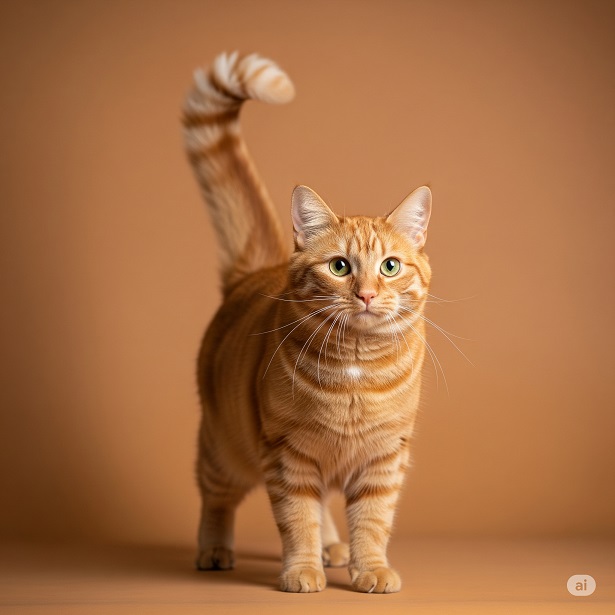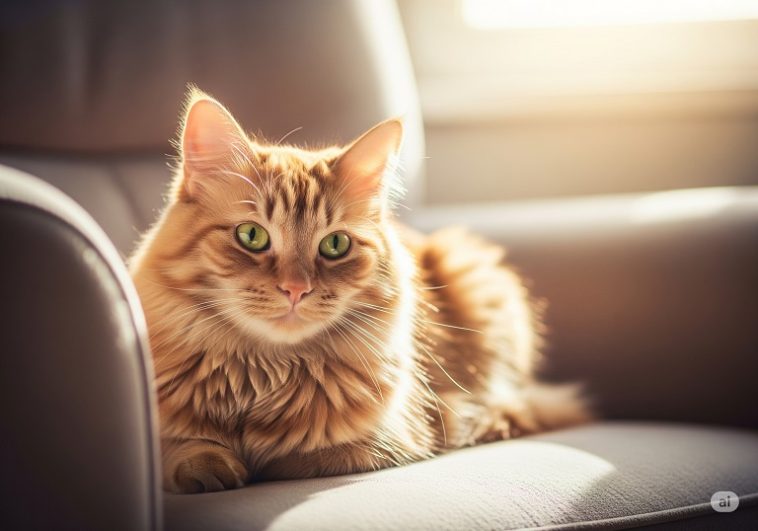Cats are enigmatic creatures, often leaving their human companions puzzled by their actions and reactions. Understanding cat body language is key to deciphering what these fascinating animals are trying to communicate. As a cat owner, you might have experienced your feline friend rubbing against your leg, purring, or suddenly darting across the room. Each of these actions carries a message, and learning to interpret these signals can enrich your relationship with your cat.
While cats may not speak our language, they communicate effectively through a complex system of body signals, facial expressions, and vocalizations. This communication can express a range of emotions, from contentment and affection to fear and aggression. By paying attention to these cues, you can respond appropriately to your cat’s needs and emotions, fostering a stronger bond.
In this comprehensive guide, you will explore the intricacies of cat body language, learn to read various signals, and gain insights into what your cat might be thinking or feeling at any given moment. This knowledge will not only enhance your connection with your feline friend but also help you create a more harmonious living environment.
The Importance of Understanding Cat Body Language
Recognizing and interpreting cat body language is crucial for maintaining a happy and healthy relationship with your pet. Cats are creatures of instinct, and their body language is a reflection of their natural behaviors. By understanding these cues, you can better meet your cat’s needs and ensure their well-being.
Misinterpretations of cat behavior can lead to stress for both the cat and the owner. For instance, a swishing tail might be mistaken for playfulness when it actually signals irritation. By learning the subtleties of feline communication, you can avoid misunderstandings and prevent potential conflicts with your cat.
Moreover, understanding cat body language can help you identify signs of illness or discomfort early on. Many cats are adept at hiding pain, but subtle changes in their behavior or posture can indicate health issues. Being attuned to these signals allows you to seek veterinary care promptly, ensuring your cat’s continued health and happiness.
Common Cat Body Language Signals

Cats use a variety of body language signals to express themselves. Recognizing these signals is essential to understanding what your cat is trying to convey. Some common signals include:
- Tail Position: A cat’s tail is highly expressive. A tail held high usually indicates confidence or curiosity, while a tucked tail can signify fear or submission.
- Purring: While often associated with contentment, purring can also occur when a cat is anxious or in pain.
- Kneading: This behavior, where a cat pushes its paws against a soft surface, is a sign of comfort and contentment.
Understanding these signals can help you respond appropriately to your cat’s emotional state. For example, if your cat’s ears are flattened, it may be feeling threatened or anxious, and it’s best to give it some space.
Learning to interpret cat body language is an ongoing process. Each cat is unique, and their signals may vary slightly. By observing your cat’s behavior in different contexts, you can develop a deeper understanding of their individual communication style.

Reading a Cat’s Tail Movements
The tail is one of the most expressive parts of a cat’s body. By paying attention to its movements, you can gain valuable insights into your cat’s mood and intentions. Here are some common tail signals and their meanings:
- Tail Held High: A tail held upright is a sign of confidence and friendliness. Your cat is likely feeling happy and secure.
- Puffed Tail: A fluffed-up tail indicates fear or aggression. Your cat might be startled or preparing to defend itself.
- Swishing Tail: A tail that’s moving back and forth quickly often signals irritation or agitation. It’s best to give your cat some space in this state.
Understanding these tail signals can help you determine when your cat is receptive to interaction or when it needs time alone. By respecting these cues, you can build trust and strengthen your bond with your cat.
Tail movements can also provide context for other signals. For example, a cat with a high tail and slow blinks is likely feeling content and relaxed. Observing these combinations can enhance your ability to interpret your cat’s overall emotional state.
Decoding Facial Expressions in Cats
A cat’s face can reveal a lot about its emotions and intentions. By learning to read your cat’s facial expressions, you can gain a deeper understanding of its mood. Here are some key expressions to look out for:
- Relaxed Whiskers: When a cat’s whiskers are relaxed and pointing outward, it indicates a calm and content state.
- Dilated Pupils: Wide pupils can signal excitement or fear. Context is crucial, as these expressions can vary depending on the situation.
- Slow Blinks: A slow blink is a sign of trust and affection. If your cat gives you a slow blink, it’s a good idea to return the gesture.
Facial expressions are a subtle yet powerful aspect of cat communication. By observing your cat’s face closely, you can become attuned to its needs and emotions, allowing you to respond appropriately.
In addition to facial expressions, vocalizations often accompany these signals. A soft meow paired with relaxed whiskers can indicate a desire for attention or interaction. By considering both facial expressions and vocal cues, you can better understand your cat’s needs.
Ears and Eyes: Understanding Feline Communication
A cat’s ears and eyes are vital components of its communication repertoire. These features can convey a wide range of emotions and intentions. Here are some key signals to watch for:
Ears:
- Forward Ears: Ears facing forward indicate curiosity or interest. Your cat is likely attentive and engaged with its surroundings.
- Flattened Ears: Ears pressed back against the head can signal fear or aggression. It’s best to give your cat space if you see this signal.
- Swiveling Ears: Ears that are moving or twitching indicate that your cat is trying to locate a sound or is feeling uncertain.
Eyes:
- Slow Blinks: As mentioned earlier, slow blinks are a sign of trust and affection.
- Half-Closed Eyes: Half-closed eyes often indicate relaxation or sleepiness. Your cat is comfortable and at ease.
- Staring: Direct staring can be a sign of dominance or aggression, especially if paired with dilated pupils.
By paying attention to your cat’s ears and eyes, you can gain a better understanding of its emotional state. These signals, combined with other body language cues, provide a comprehensive picture of your cat’s mood and intentions.
The Significance of Purring and Meowing
Cats use a variety of vocalizations to communicate with their human companions. Purring and meowing are two of the most common sounds you’ll hear from your cat. Understanding these vocal cues can help you respond effectively to your cat’s needs.
Purring:
Purring is often associated with contentment, but it can also occur in other situations. Cats may purr when they are feeling anxious, in pain, or seeking attention. The context in which your cat is purring can provide clues about its emotional state.
Meowing:
Cats meow for various reasons, including greeting, seeking attention, or expressing discomfort. The tone and pitch of a meow can convey different messages. A high-pitched meow might indicate excitement, while a low, drawn-out meow could signal frustration.
By paying attention to the context and nuances of your cat’s vocalizations, you can better understand what it is trying to communicate. This understanding allows you to provide appropriate responses and strengthen your bond with your feline friend.
Body Postures: What Your Cat is Trying to Tell You
A cat’s body posture can reveal a lot about its emotional state and intentions. By observing your cat’s posture, you can gain insights into how it is feeling and what it might do next. Here are some common body postures and their meanings:
- Arched Back: An arched back with fur standing on end is a classic sign of fear or aggression. Your cat is trying to appear larger and more intimidating to potential threats.
- Crouching: A crouched posture with ears back and tail tucked can indicate fear or submission. Your cat may be feeling threatened and seeking a safe escape route.
- Relaxed Posture: A cat lying on its side or back with its belly exposed is showing trust and relaxation. This posture indicates that your cat feels safe and secure in its environment.
Understanding these body postures can help you respond appropriately to your cat’s needs and emotions. By recognizing signs of fear or aggression, you can provide reassurance and create a more comfortable environment for your cat.
Body posture is often accompanied by other signals, such as tail movements or vocalizations. By considering these cues together, you can gain a comprehensive understanding of your cat’s emotional state and intentions.
Understanding the Context of Cat Behavior
Interpreting cat body language requires an understanding of the context in which certain behaviors occur. Cats react differently to various situations, and their body language can change accordingly. By considering the context, you can make more accurate interpretations of your cat’s signals.
For example, a cat that is purring while being petted is likely expressing contentment. However, if the same cat purrs while hiding under a bed, it might be feeling anxious or in pain. The environment, time of day, and recent experiences can all influence your cat’s behavior and body language.
By paying attention to the context, you can tailor your responses to your cat’s needs. If your cat is showing signs of stress or discomfort, providing a quiet and safe space can help alleviate its anxiety. Conversely, if your cat is displaying playful behavior, engaging in interactive play can strengthen your bond.
Tips for Building a Better Relationship with Your Cat
Understanding cat body language is a valuable tool for building a strong and trusting relationship with your feline friend. Here are some tips to enhance your connection:
- Observe and Learn: Spend time observing your cat’s behavior in different situations. Take note of its body language and vocalizations to better understand its communication style.
- Respect Boundaries: Cats value their personal space. If your cat is displaying signs of irritation or fear, give it space and time to relax.
- Engage in Play: Interactive play is a great way to bond with your cat. Use toys that mimic prey to stimulate your cat’s natural hunting instincts.
By following these tips, you can create a more harmonious and fulfilling relationship with your cat. Understanding and respecting your cat’s body language is key to fostering trust and deepening your connection.
Conclusion: Enhancing Your Connection Through Understanding
Mastering the art of understanding cat body language can transform your relationship with your feline companion. By learning to read the signals your cat sends, you can respond appropriately to its needs and emotions, creating a more harmonious living environment.
Recognizing the importance of context, vocalizations, and body postures allows you to interpret your cat’s behavior accurately. This understanding not only strengthens your bond but also enhances your ability to provide the care and attention your cat deserves.
As you continue to observe and learn from your cat, you’ll discover the unique ways it communicates and expresses itself. Embrace this journey of understanding and watch as your connection with your cat grows deeper and more meaningful.
Understanding your cat’s body language is a rewarding endeavor that benefits both you and your feline friend. By becoming fluent in this non-verbal communication, you can create a loving and supportive environment for your cat. Start today by observing your cat’s signals and responding with empathy and care. Your efforts will be rewarded with a happier, healthier, and more connected relationship with your cat.

